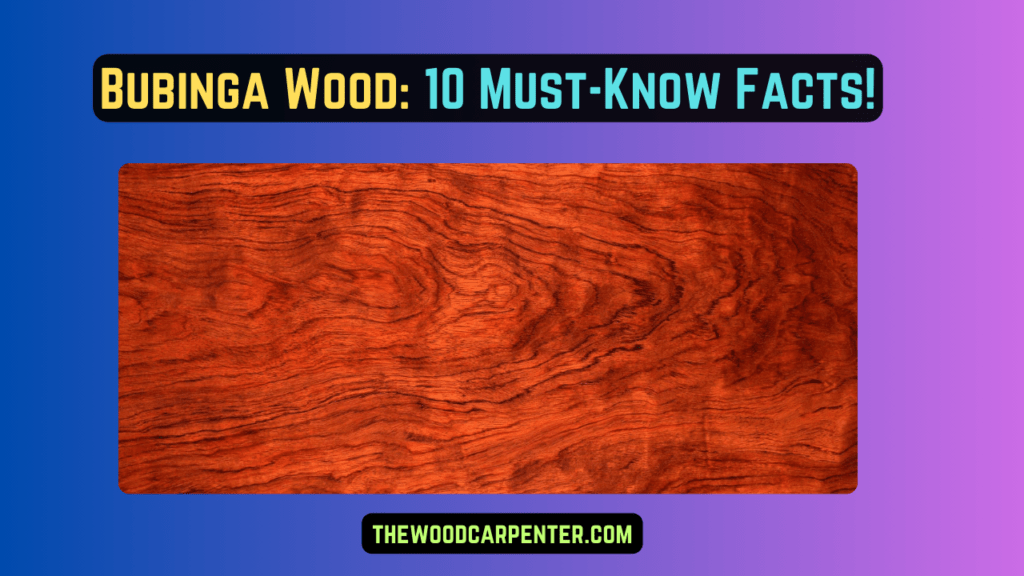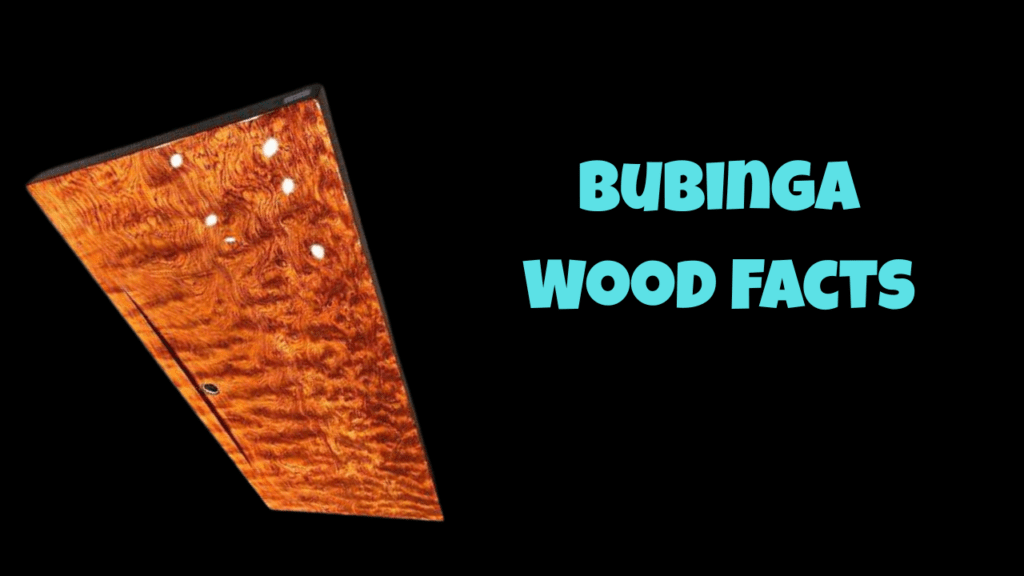
What is Bubinga Wood ?
Originating mostly in the tropical parts of Africa, notably from nations like Cameroon, Gabon, and the Congo, bubinga is a hardwood species. Belonging to the Guibourtia genus, its similar appearance and features make it occasionally referred to as “African rosewood”.
Still, Bubinga possesses certain characteristics that distinguish it, even though it is not regarded as real rosewood.
The Origin of Bubinga
Rising to startling heights of up to 150 feet, bubinga trees thrive in the humid woodlands of West and Central Africa. Large size of the tree makes it a great source of long, wide boards, which are in great demand for many upscale wood projects.
Local artists have always employed the wood, but its worldwide appeal grew when Western builders saw its possibilities.
Types of Bubinga Wood
Each of the several various types of bubinga wood has unique physical and aesthetic qualities. The most noteworthy variants are listed here:
Waterfall bubinga
Waterfall Bubinga is known for its visually arresting grain, bubinga sometimes resembles flowing water. Because of its striking look, this species is much sought for decorative work.
Pommelé Bubinga
Pommelé Bubinga has a three-dimensional impression with quilted or mottled grain pattern. High-end veneers for luxury furniture and interior design increasingly feature this kind of bubinga.
Straight- Grain Bubble
Straight-Grain Bubinga is easier to handle in some uses, as its name implies, its grain pattern is homogeneous. For jobs like flooring or cabinets, where woodworkers require consistency in grain structure, it’s favored.
Top 10 Bubinga Wood Facts

Bubinga wood, often called African Rosewood, is a highly valued hardwood used for both decorative and practical purposes. Here are 10 key features of this amazing wood:
1. Origin and Species
Bubinga comes from the Guibourtia genus, with three main species: Guibourtia demeusei, Guibourtia pellegriniana, and Guibourtia tessmannii. It is native to tropical forests in Central and West Africa, mainly in countries like Cameroon and Gabon.
2. Density and Hardness
Bubinga is a tough wood, with a Janka hardness of 1980 lbf, making it durable and resistant to wear. Some sources even rate it as high as 2410 lbf.
3. Unique Appearance
Bubinga has a beautiful range of colors, from light red to dark reddish-brown. It often features black or purple streaks and has interesting grain patterns, such as pommele, flamed, waterfall, and mottled, making it a popular choice for high-end furniture and cabinets.
4. Workability
While bubinga is hard and dense, it is generally easy to work with if you use sharp tools. However, its interlaced grain can cause tearouts during machining, so care is needed when handling it.
5. Resistance and Durability
Bubinga is highly resistant to termites, marine borers, and rot, making it suitable for both indoor and outdoor use. It is very durable, depending on the species.
6. Odor Features
Freshly cut bubinga can have an unpleasant smell, often compared to vomiting. However, this odor disappears once the wood dries and leaves no lingering scent.
7. Acoustic Qualities
Bubinga is great for musical instruments, especially guitar and bass fingerboards, because of its density and unique grain. It enhances the sound, giving it a rich, deep tone.
8. Environmental Considerations
Due to concerns about overharvesting, bubinga is listed in CITES Appendix II. Some species are endangered, so it’s important to source it from ethical suppliers.
9. Common Uses
Bubinga is widely used in making fine furniture, cabinets, floors, veneers, inlays, and special items like humidors, thanks to its beauty and durability.
10. Cultural Value
In some African cultures, bubinga is used in spiritual ceremonies and is believed to have mystical qualities. Its unique properties have earned it a respected place among woodworkers and artists.
These characteristics of bubinga make it a sought-after material in carpentry and crafting.
Also read: Bishopwood: A Versatile Tropical Hardwood
Types of Mahogany Wood: A Complete Guide to Varieties, Uses & Prices
FAQ:
1. What makes Bubinga wood so special ?
Bubinga is valued for its stunning appearance, which includes colors ranging from red to reddish-brown with striking black or purple streaks. It also has unique grain patterns, making it a top choice for fine furniture and musical instruments.
2. Is Bubinga wood hard and durable ?
Yes, Bubinga is one of the hardest woods, with a high Janka hardness rating, making it very durable and resistant to wear and tear. It’s also resistant to termites and rot.
3. How easy is it to work with Bubinga wood ?
While Bubinga is hard and dense, it is still relatively easy to work with using sharp tools. However, its grain can cause tearouts, so it’s important to handle it carefully.
4. What does Bubinga wood smell like ?
Freshly cut Bubinga can have a strong, unpleasant odor, often compared to a sour smell. This disappears once the wood dries, and there’s no lingering scent afterward.
5. What is Bubinga wood used for ?
Bubinga is commonly used in high-end furniture, cabinets, flooring, veneers, inlays, and musical instruments like guitars and bass fingerboards. It’s also used for special items like humidors.
6. Is Bubinga wood good for outdoor use?
Yes, Bubinga is highly durable and resistant to termites and rot, making it suitable for both indoor and outdoor applications.

